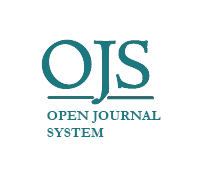The Effect of Exchange Rates Towards Stock Return Mediated With Inflation Rates and Interest Rates
DOI:
https://doi.org/10.22219/jrak.v11i2.16320Keywords:
Exchange Rates, Inflation Rates, Interest Rates, Stock ReturnAbstract
This study aims to determine the effect of exchange rate towards stock return mediated with variable inflation rates and interest rates. The study population is a company listed on the Index LQ45 period January 2015 – December 2019. This is quantitative study using purposive sampling technique and obtained sample a number of 28 companies with monthly period start from January 2015 until December 2019. The data source in this study are secondary data. The data analysis technique used is path analysis accompanied by a T test (partial) and Sobel test (mediation). Partial test results show that exchange rates and interest rates have a negative and significant effect on stock return, while inflation rates has a positive and insignificant effect on stock return. Sobel test results show that exchange rates has insignificant effect on stock return through variable inflation rates with no mediation, while exchange rates has significant effect on stock return through variable interest rates with partial mediation. The implication of this research is expected to be an addition to the parties concerned with this research problem.
Downloads
References
Afiyanti, H.T. (2018). The Effect of Inflation, BI Rate and Exchange Rate on Stock Returns (Study on Food & Beverage Subsector Companies Listed on the Indonesia Stock Exchange 2013-2016 Period). Journal of Business Administration, 61(2).
Ahmad, M.I., Rehman, R.U., & Raoof, A. (2010). Do interest rates, exchange rates affect stock returns? Pakistani perspective. International Research Journal of Finance and Economics, 50 (50), 146–150.
Alwi, Z.I. (2003). Capital Markets: Theory and Application (Pert Edition). Nasindo Internusa.
Andes, S. L., Puspitaningtyas, Z., & Prakoso, D. A. (2017). 8-16 Documents received on Saturday. Journal of Financial And Business Accounting, 10(2), 8–16. http://jurnal.pcr.ac.id
Baron, R. M., & Kenny, D. A. (1986). Differences in Moderator-Mediator Variables in Social Psychology Research. Conceptual, Strategic, and Statistical Considerations. Journal of Personality and Social Psychology, 51(6), 1173-1182. https://doi.org/10.1037/0022-3514.51.6.1173
Candy, C., & Winardy, A. (2018). The Effect of Macroeconomic Factors on Stock Returns on the LQ45 Stock Index. Jesya (Journal of Islamic Economics & Economics), 2(1), 65–79. https://doi.org/10.36778/jesya.v2i1.35
Eun, C. S., Resnick, B. G., & Sabherwal, S. (2013). International Financial Management (6th ed.). Salemba Four.
Fahmi, I. (2015). Investment Management Theory and Questions and Answers.
Firmansyah, M. W. (2017). The Influence of Indonesia's Relative Inflation Ratio and Interest Rate Against the United States on the Rupiah Exchange Rate (Implementation of International Purchasing Power Parity Fisher Effect). Journal of Business Administration (JAB), Vol.47(2), 57–64.
Ghozali, I. (2018). Multivariate Analysis Application with IBM SPSS Program. Diponegoro University Publishing Agency: Semarang.
Gujarati, D. (2003). Basic Econometry. Erlangga.
Hanafi, M. (2010). International Financial Management (2nd ed.). Media Discourse Partners.
Hartono, J. (2000). Portfolio Theory and Investment Analysis (3rd Edition). Yogyakarta: BPFE.
Hartono, J. (2017). Portfolio theory and investment analysis (Eleventh edition). In Yogyakarta: BPFE.
Indonesia, B. (2020). www.bi.go.id. Bank Indonesia. https://www.bi.go.id/id/statistik/information-kurs/transaksi-bi/Default.aspx
Indonesia, B. E. (2018). www.idx.co.id. Indonesia stock exchange. https://www.idx.co.id/product/Index/
Jogiyanto, H. (2008). Analysis and design. Yogyakarta. In Management Information System Jogiyanto H.M. Analysis and Design.
Kusmita, K., & Sholichah, M. (2018). Macroeconomics, Profitability and Company Size on Stock Returns in Banking Sector Companies. JIATAX (Journal of Islamic Accounting and Tax), 1(2), 89 https://doi.org/10.30587/jiatax.v1i2.527
Madura, J. (2006). International Corporate Finance. Translation (Book 1). Salemba Four.
Mankiw, N. G. (2006). Macroeconomics (Sixth Edition). PT. The Passion of Romance.
Mishkin, F. S. (2008). Money Economics, Banking, and Financial Markets, Edition 8. Salemba Empat.
Olweny, T., & Omondi, K. (2011). The Effect Of Macro-Economic Factors On Stock Return Volatility In The Nairobi Stock Exchange, Kenya. 1(3), 21–29.
Rahardjo, B. (2009). Corporate Financial Statements, Second Edition. Gadjah Mada University Press.
Samsul, M. (2006). Capital Markets and Portfolio Management. BPFE.
Sausan, F. R., Korawijayanti, L., & Ciptaningtias, A. F. (2020). The Effect of Return on Assets (ROA), Debt to Equity Ratio (DER), Earning per Share (EPS), Total Asset Turnover (TATO) and Exchange Rate on Stock Return of Property and Real Estate Companies at Indonesia Stock Exchange Period 2012- 2017. Ilomata International Journal of Management, 1(2), 103–114. https://www.ilomata.org/index.php/ijtc/article/view/66
Siamat, D. (2005). Financial Institution Management. “Monetary Policy and Banking.” Jakarta: Faculty of Economics, University of Indonesia, First Edition.
Sobel, M. E. (1982). Asymptotic Confidence Intervals for Indirect Effects in Structural Equation Models. Sociological Methodology, 13(1982), 290. https://doi.org/10.2307/270723
Sodikin, A. (2007). Macroeconomic Variables That Affect Stock Returns in BEJ. Management, 6(2), 1–15.
Statistics, B. P. (2021). www.bps.go.id. Central Bureau of Statistics. https://www.bps.go.id/linkTableDinamis/view/id/1061
Sugiyono. (2018). Quantitative, Qualitative and R&D Research Methods. In 26th.
Sukirno, S. (2011). Introduction to Macroeconomic Theory. Jakarta.
Suriyani, N. K., & Sudiartha, G. M. (2018). The Effect of Interest Rates, Inflation and Exchange Rates on Stock Returns on the Indonesia Stock Exchange. Udayana University Management E-Jurnal, 7(6), 3172. https://doi.org/10.24843/EJMUNUD.2018.v07.i06.p12
Sutrisno. (2001). Financial Management Theory, Concepts, and Applications. In First Edition, Second Printing. econicia.
Tandelilin, E. 2010. (2010). Fundamentals of Investment Management. Finance.
Wahyuni, E.D. (2021). Information Asymmetry as Moderating Effect of Integrated Reporting on Stock Return. Journal of the Academy of Accountancy, 4(1), 69-79. https://doi.org/10.22219/jaa.v4i1.14973
Wibowo, A. (2013). Differences in the influence of macroeconomic factors on. Media Economics And Management, 27(1), 128–150.
Wiradharma A, M., & Sudjarni, L. (2016). The Effect of Interest Rates, Inflation Rates, Rupiah Exchange Rates and Gross Domestic Product on Stock Returns. Udayana University Management E-Journal, 5(6), 254288.
www.bbc.com. (2015). www.bbc.com. https://www.bbc.com/indonesia/berita_indonesia/2015/08/150824_indonesia_rupiah_anjlok
Yahoo, F. (2021). Finance.yahoo.com. https://finance.yahoo.com/recent-quotes
Downloads
Published
Issue
Section
License
Copyright (c) 2021 Muhammad Jihadi, Ilfi Hadiatus Safitri, Dewi Brahmawati

This work is licensed under a Creative Commons Attribution 4.0 International License.

Jurnal Reviu Akuntansi dan Keuangan is licensed under a Creative Commons Attribution-NonCommercial-ShareAlike 4.0 International License.
Authors who publish with this journal agree to the following terms:
- Authors retain copyright and grant the journal right of first publication with the work simultaneously licensed under a Creative Commons Attribution-NonCommercial-ShareAlike 4.0 International License that allows others to share the work with an acknowledgement of the work's authorship and initial publication in this journal.
- Authors are able to enter into separate, additional contractual arrangements for the non-exclusive distribution of the journal's published version of the work (e.g., post it to an institutional repository or publish it in a book), with an acknowledgement of its initial publication in this journal.
- Authors are permitted and encouraged to post their work online (e.g., in institutional repositories or on their website) prior to and during the submission process, as it can lead to productive exchanges, as well as earlier and greater citation of published work (See The Effect of Open Access).










